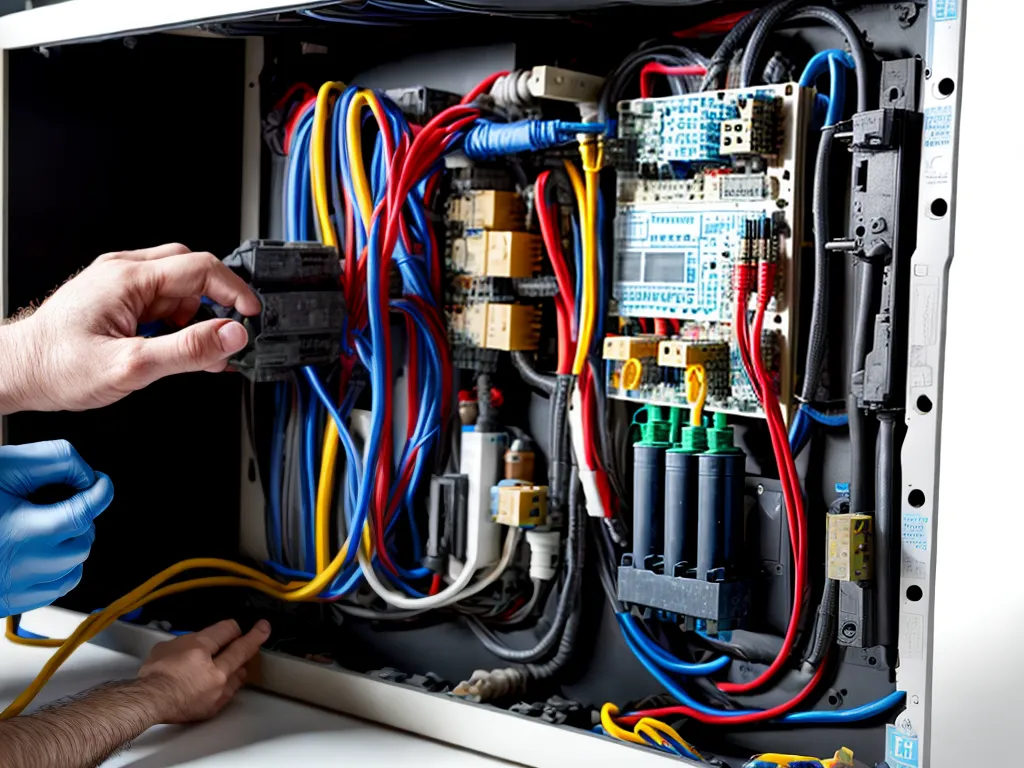
How to Avoid Common Mistakes When Installing a Subpanel
Installing a new subpanel in your home can be a complex project, but also extremely rewarding if done properly. However, there are some common mistakes that are easy to make if you are not careful. In this guide, I will walk through the subpanel installation process step-by-step, pointing out the most common errors and how to avoid them.
Choosing the Right Subpanel Size and Location
The first step is choosing the right subpanel size and optimal location in your home.
Determining the Correct Subpanel Size
-
Calculate the total amperage of all existing and planned future circuits that will be powered by the subpanel. Add at least 25% more capacity to allow for future expansion.
-
Choose a subpanel that meets or exceeds that total amperage. For example, if your calculated load is 150 amps, select a 200 amp subpanel. It's better to have more capacity than you need rather than not enough.
-
Consider the main service panel amperage. The subpanel ampacity cannot exceed what the main panel can provide. For example, if you have a 150 amp main panel, do not install a 200 amp subpanel.
Picking the Right Location
-
Install the subpanel as close to the main panel as possible to minimize voltage drop. Longer wire runs lose more power.
-
Choose a central location that minimizes the length of wire runs to circuits. This makes wiring easier and less expensive.
-
Pick an indoor location protected from the elements and easily accessible. Do not install the subpanel outside or in an unfinished basement or attic space.
-
Install the subpanel on a sturdy wall with adequate support. You may need to install bracing to properly support it.
Hiring a Licensed Electrician
Installing a subpanel is complex and potentially dangerous. Only a licensed electrician should take on this project.
-
Improper subpanel installation can cause fires, injury, and other dangers.
-
There are complicated electrical calculations involved in sizing the wires and components.
-
Local permitting and regulations require professional installation in most cases.
Hiring a pro is strongly recommended over DIY for safety. The small upfront cost is well worth it.
Using the Proper Wire Size
Using wire that is too small is a common DIY subpanel mistake. This can cause voltage drop, overheating, and potential fires.
-
The wire size must match the amperage rating of the subpanel. For example, a 100 amp subpanel requires #1 AWG wire.
-
The longer the wire run from the main panel, the larger the wire needs to be to prevent voltage drop. Consult wiring guides.
-
When in doubt, go thicker. Using more copper hurts your wallet but improves safety.
Installing Appropriate Breakers
Breakers in the new subpanel must be compatible and appropriately sized.
-
Use breakers designed for the subpanel by the same manufacturer. Mixing brands risks malfunction.
-
Size breakers for the amperage rating of the circuit. For example, a 20 amp kitchen circuit requires a 20 amp breaker.
-
Do not install too large of a main breaker. It should match the amperage of the subpanel and wires.
Providing Sufficient Grounding and Bonding
Proper grounding and bonding prevents electrocution and shock by providing a safe path for errant electrical current.
-
The ground wire from the main panel must be extended and connected to the subpanel ground bar.
-
A grounded conductor bonding jumper wire must be installed between neutral and ground bars in the subpanel.
-
Use thickgauge copper wire for all grounding conductors. Do not skimp on grounding!
Getting Necessary Permits
Most jurisdictions require permits and inspections for subpanel installation:
-
Research permit requirements and apply prior to starting work. Performing unpermitted work can risk fines.
-
Only licensed electricians with proper credentials can acquire permits for subpanel work.
-
Schedule inspections for rough-in, final wiring, and complete installation. The work must pass inspection before drywall.
Skipping permits and inspections is extremely dangerous and risks electrocution hazards in the home. Do it legally.
Conclusion
Installing a subpanel is not a project for amateurs. Mistakes can destroy property, cause injuries, start electrical fires, and even kill.
Hire only licensed professionals, get proper permits, use sufficiently large components, and follow safety procedures. The process is complex, but perfectly safe when done correctly. Spending the small amount upfront to have it done properly avoids huge risks down the road.